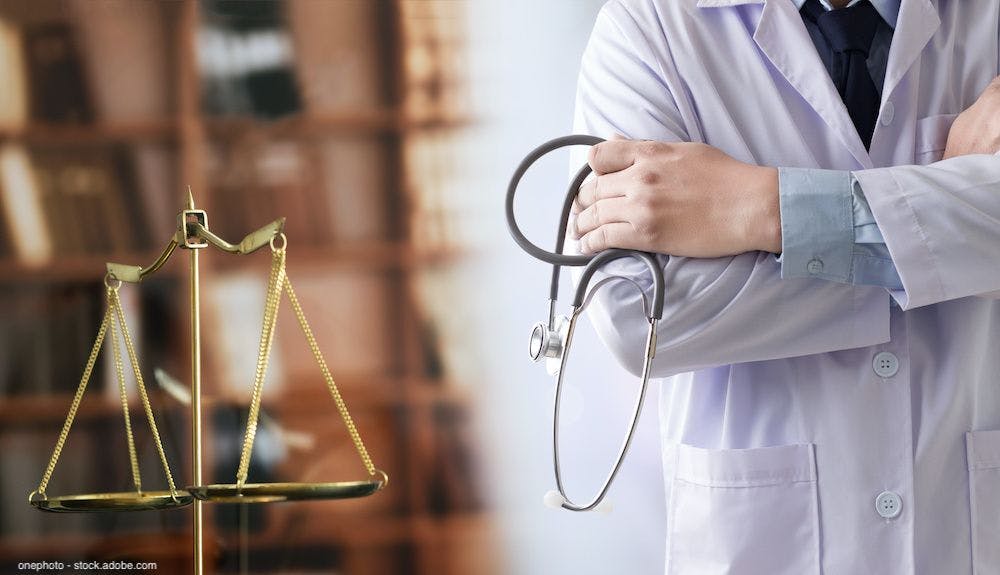Publication
Article
Urology Times Journal
How is a medical malpractice claim defined?
Author(s):
Required elements to prove a claim include breach of duty and damages.
Kenton H. Steele, Esq

What are legal standards used to define medical malpractice? How do judges and juries decide which medical errors entitle a patient to bring a lawsuit? If a plaintiff alleges medical malpractice, what must he or she prove to recover damages? This article will provide an overview of what must be present for a malpractice claim to exist.
The idea that physicians are responsible for avoidable injuries to patients is nearly as old as the practice of medicine. The Code of Hammurabi sets out penalties for medical errors: “If the doctor has treated a gentleman with a lancet of bronze and has caused the gentleman to die…cut off his hands.” Thankfully, our system for addressing medical errors has changed significantly since Babylonia’s 3800 years ago.
The foundation for the modern approach to addressing medical malpractice was set in ancient Rome, where a person injured by a doctor could seek monetary compensation for economic losses and pain and suffering. The Roman system was the basis for English common law, which was the basis for the American legal system.
The 4 elements to prove
To win a malpractice case, a patient is required to prove 4 elements:
• the existence of a duty of care owed to the patient by the doctor
• a breach of this duty in the form of a departure from the standard of care
• a causal tie between the breach and an injury to the patient, and
• damages in the form of monetary costs, physical pain, and mental suffering.
To prevail, a plaintiff must show that it is more likely than not that each element is present.
With the first element, a doctor must exercise reasonable care in providing treatment to the patient. This is typically the most straightforward element for a plaintiff to establish. Although there are some exceptions, a duty is generally presumed to exist when a doctor treats a patient.
To establish a breach of duty, a plaintiff must offer testimony from a qualified expert to explain the standard of care required and how the defendant failed to meet that standard. The definition of standard of care can vary. In general terms, it refers to the care that a doctor is reasonably expected to provide under the circumstances in the case. Importantly, the standard of care requires that treatment decisions are reasonable. Meeting the standard of care does not require that decisions are made with foresight and perfect accuracy. Doctors may disagree about what treatment option is best. Such disagreements do not mean that 1 treatment option is within the standard of care and the other is not.
A departure from the standard of care is legally insignificant without an injury. To establish the third element of a malpractice claim, a plaintiff must show a direct tie between a breach of the relevant standard and an injury. Expert testimony can usually establish that an injury would not have occurred “but for” the identified breach of the standard of care.
Finally, a plaintiff asserting a malpractice claim must show that the injury incurred is compensable. There are 2 recognized types of injury, or damages. First, there are economic damages, the monetary costs resulting from an injury. This includes the cost of subsequent medical care and lost wages. The other component is a plaintiff’s noneconomic damages, which comprise the pain and mental suffering associated with an injury. This type of loss is much more difficult to evaluate. What is the dollar amount that compensates someone for discomfort? What is the monetary value of the anxiety a patient experiences? The answers to these questions are entirely subjective. Ultimately, if a plaintiff can show that the other elements of their claim are present, a jury will determine the amount that represent fair compensation for an injury.
Conclusions
The framework explained in this article is designed to balance society’s interest in compensating persons wrongly injured by medical errors against the need to ensure that doctors are not held to an impossible standard of perfection. This system has been developed over thousands of years. It is unclear if we will ever find the perfect way to respond to medical complaints, but we can be certain that the justice system will continue to evolve.
Steele is an attorney in the Columbus, Ohio office of Reminger Co., LPA. He specializes in malpractice defense and insurance litigation. Please contact him at KSteele@reminger.com with any feedback or comments on this column.


























